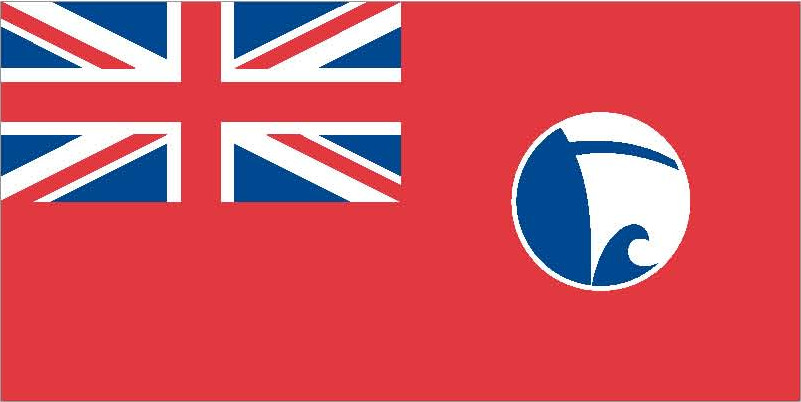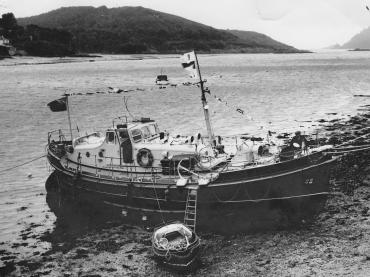Details
Construction
Dimensions
History
Just before the outbreak of World War II, the RNLI placed a larger and more powerful lifeboat on station at Bembridge. Built in 1939 by J S White, JESSE LUMB was a 46ft Watson fitted with twin Ferry VE4 40hp diesels .
The boat was named "JESSE LUMB" by Miss A.L. Lumb in memory of her brother on 21 July 1939. Her 40 horsepower diesel engines were designed to work underwater and gave her a top speed of 8.5 knots. During the war she saved some 138 persons, many during wartime conditions. In 1940, the RNLI Bronze Medal was awarded to Coxswain Harry J Gawn for rescuing the crew of the Hired Anti Submarine Trawler KINGSTON CAIRNGORM that was flooding in a blizzard on Chichester Bar on the night of 29/30 January 1940.
In an operation involving several approaches, her crew of 21 was taken of and landed at Portsmouth. The lifeboat had been at sea for 14 hours with the Coxswain at the wheel the whole time and at the end of the service the lifeboat’s deck was covered in ice. On the morning of 5 December 1947, the trawler ERRAID, which was on tow from Portsmouth to Plymouth, broke adrift and was being driven ashore. The Bembridge lifeboat JESSE LUMB eventually succeeded in taking off the crew of 18 when the vessel was within a few hundred yards of the shore. In 1968 she also stood by the submarine HMS ALLIANCE when it stranded on Bembridge Ledge.
JESSE LUMB’s service at Bembridge ended in 1970, but she spent many years in the relief fleet. As the last wartime lifeboat of this type in service, she was moved to Duxford for display in 1980 where she could be seen for many years at the Imperial War Museum, in a display dedicated to wartime air-sea rescue.
Source; George Hogg, Advisory Committee, December 2008.
Significance
- What is the vessel’s ability to demonstrate history in her physical fabric?
Evidence for designs, functions, techniques, processes, styles, customs and habits or uses and associations in relation to events and people. How early, intact or rare these features are may impact on significance.
JESSE LUMB is a 46ft Watson class twin screw design lifeboat of double diagonal construction. She was built of mahogany and fitted with twin Ferry VE4 40hp diesel engines. She underwent conservation work at the Imperial War Museum in the 1980s and was returned to semi-original condition in her 1939 configuration.
- What are the vessel’s associational links for which there is no physical evidence?
Associations with people or places. Off-ship research.
JESSE LUMB was built by J Samuel White & CO and served at Bembridge from 1939 to 1970 giving her strong local significance to the Isle of Wight. She was commissioned with a legacy from Miss A Lumb whose family owned a high quality textile works in Huddersfield and named after her brother. JESSE LUMB served throughout the Second World War and saved some 138 persons during the wa, including numerous airmen from downed planes, often in difficult conditions. In 1940, the RNLI Bronze Medal was awarded to Coxswain Harry J Gawn for rescuing the crew of the hired anti-submarine trawler KINGSTON CAIRNGORM that was flooding in a blizzard on Chichester Bar in January 1940. JESSE LUMB spent ten years in the relief fleet before being moved to the Imperial War Museum Duxford for display in 1980 as the last wartime lifeboat of this type still in service. She was recorded on the National Register of Historic Vessels in 1999 and given the status of inclusion in the National Historic Fleet.
- How does the vessel’s shape or form combine and contribute to her function?
Overall aesthetic impact of the vessel, her lines, material she was built from and her setting. Does she remain in her working environment?
JESSE LUMB was put on station as a large, powerful lifeboat whose twin engines had a top speed of 8.5 knots. As a typical Watson class design of the period, she has a shape which many people associate with traditional lifeboats and a distinctive RNLI livery. Although modified throughout her service life from 1939 to 1970 she is a good example of the way in which a lifeboat of the period was equipped. JESSE LUMB is now in static preservation undercover at the Classic Boat Museum premises in West Cowes near to the site where she was built and is open to the public at set times.
Sources: NHS-UK team, January 2024.
Key dates
-
1939
Built by J. Samuel White of Cowes as a Watson Class lifeboat
-
1970
Moved to the Relief Fleet of the RNLI
-
1980
Acquired by the Imperial War Museum and moved to the Duxford site
-
July 2019
Now at the Classic Boat Museum premises at Medina Yard, West Cowes. Currently in static preservation with public access part of the week, pending a move to a new purpose built Museum, dependent on the Trust securing the necessary funds to facilitate this. KJ
Sources
Mahon, Carol, Imperial War Museum Duxford, Imperial War Museum, 1989
Own this vessel?
If you are the owner of this vessel and would like to provide more details or updated information, please contact info@nationalhistoricships.org.uk










